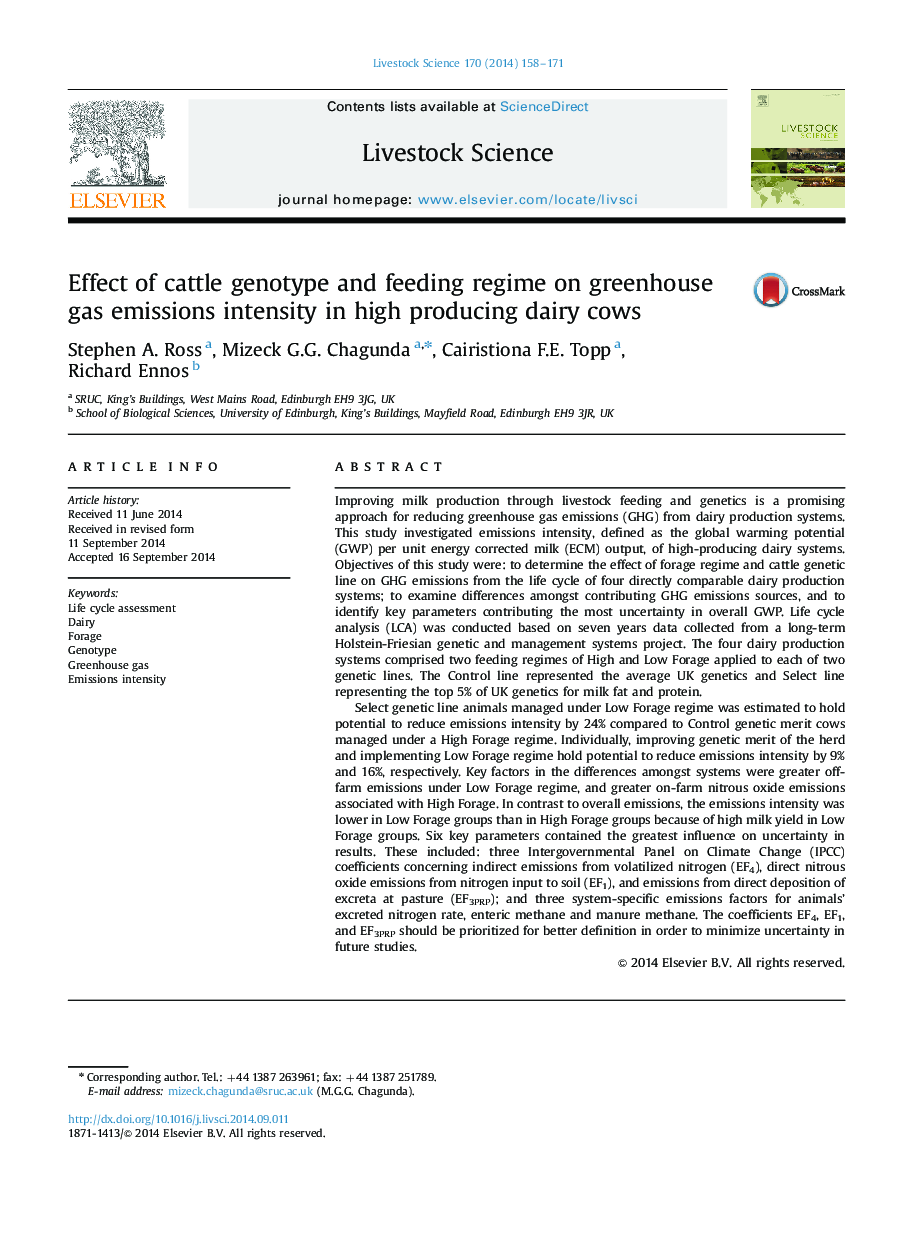| کد مقاله | کد نشریه | سال انتشار | مقاله انگلیسی | نسخه تمام متن |
|---|---|---|---|---|
| 2447178 | 1553962 | 2014 | 14 صفحه PDF | دانلود رایگان |
• Appropriate combination of genetics and feeding has the potential to reduce greenhouse gas emissions in dairy systems.
• Top genetic merit cows on low forage feed had lowest greenhouse gas emissions intensity.
• Potential to reduce emissions intensity by up to 24% at production systems level.
• 16% and 9% reduction in emissions intensity can be achieved through changes in feeding regime and genetics, respectively.
• Trade-offs amongst emissions-contributing sources exist within individual production systems.
Improving milk production through livestock feeding and genetics is a promising approach for reducing greenhouse gas emissions (GHG) from dairy production systems. This study investigated emissions intensity, defined as the global warming potential (GWP) per unit energy corrected milk (ECM) output, of high-producing dairy systems. Objectives of this study were: to determine the effect of forage regime and cattle genetic line on GHG emissions from the life cycle of four directly comparable dairy production systems; to examine differences amongst contributing GHG emissions sources, and to identify key parameters contributing the most uncertainty in overall GWP. Life cycle analysis (LCA) was conducted based on seven years data collected from a long-term Holstein-Friesian genetic and management systems project. The four dairy production systems comprised two feeding regimes of High and Low Forage applied to each of two genetic lines. The Control line represented the average UK genetics and Select line representing the top 5% of UK genetics for milk fat and protein.Select genetic line animals managed under Low Forage regime was estimated to hold potential to reduce emissions intensity by 24% compared to Control genetic merit cows managed under a High Forage regime. Individually, improving genetic merit of the herd and implementing Low Forage regime hold potential to reduce emissions intensity by 9% and 16%, respectively. Key factors in the differences amongst systems were greater off-farm emissions under Low Forage regime, and greater on-farm nitrous oxide emissions associated with High Forage. In contrast to overall emissions, the emissions intensity was lower in Low Forage groups than in High Forage groups because of high milk yield in Low Forage groups. Six key parameters contained the greatest influence on uncertainty in results. These included: three Intergovernmental Panel on Climate Change (IPCC) coefficients concerning indirect emissions from volatilized nitrogen (EF4), direct nitrous oxide emissions from nitrogen input to soil (EF1), and emissions from direct deposition of excreta at pasture (EF3PRP); and three system-specific emissions factors for animals’ excreted nitrogen rate, enteric methane and manure methane. The coefficients EF4, EF1, and EF3PRP should be prioritized for better definition in order to minimize uncertainty in future studies.
Journal: Livestock Science - Volume 170, December 2014, Pages 158–171
